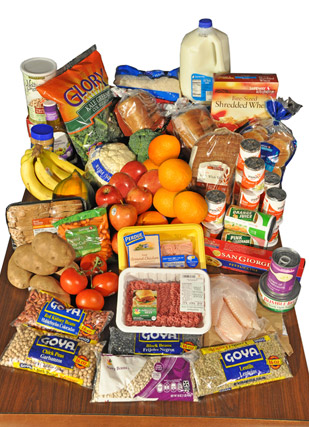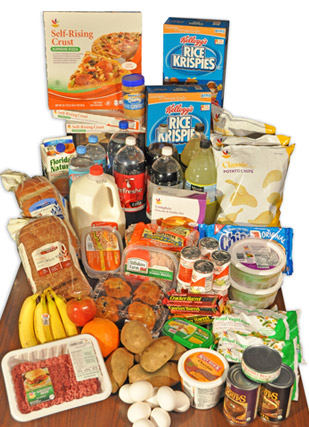

For the same amount of money—$100—and nearly the same amount of total calories—about 45,000—the “high” list is substantially more nutritious and includes many more fruits and vegetables, more beans, and more whole grains and fish than the “average” list does.
Choices within HEI components have an effect on scores. The “high” list has a higher HEI score than the “average” list because foods in the Total Grain component are predominantly whole grain rather than refined grain, the milk in the Dairy component is fat-free rather than whole, and the foods in the Total Protein component include beans and fish as well as meat and poultry.
In the “average” list, the inclusion of foods that are primarily empty calories (such as butter, soda, cookies, chips, and sherbet) and those that contain some empty calories along with nutrient-bearing calories (such as pizza, cranberry muffins, and cheese) not only drives down the HEI score, but allows much less room in the $100 budget for fresh produce and other healthy items.
The regular1 soda and lemonade beverages in the “average” list contribute only to the Empty Calorie component, and thus drive down the HEI score. Of note, half of the beverages in the “average” list are diet varieties. The overall HEI score would have been even lower if all of these beverages had been regular varieties.
View the Community Food Environment table and HEI scores
- The term “regular” is used to mean soda and other beverages that are sweetened with calorie-containing sweeteners. “Diet” is used to mean beverages that are sweetened with non-caloric sweeteners.
